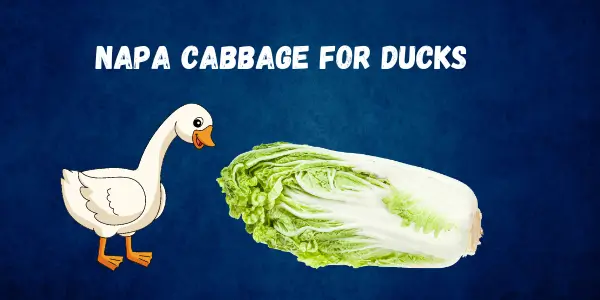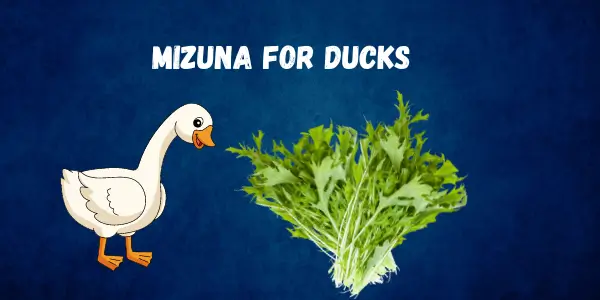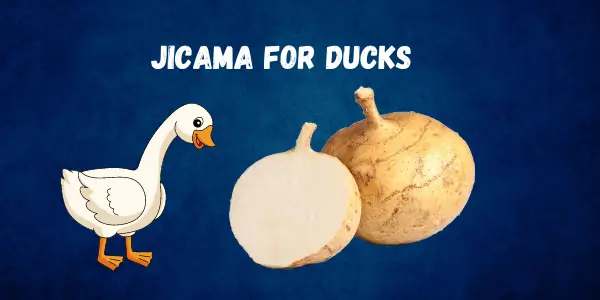Can Ducks Eat Tatsoi Benefits Risks and Feeding Tips? Discover the Facts
Published: 30 Sep 2024
Are you wondering, Can ducks eat tatsoi? The short answer is yes! Tatsoi, a leafy green packed with essential vitamins and minerals, can be a healthy addition to your ducks’ diet. If you’re looking to boost the nutrition of your feathered friends, incorporating tatsoi is a great choice.
Can Ducks Eat Totsoi?
Tatsoi, also known as spoon mustard or rosette bok choy, is a leafy green vegetable native to Asia. It belongs to the Brassica family, which includes other nutrient-dense vegetables like kale, broccoli, and cabbage.
Tatsoi is characterized by its dark green, spoon-shaped leaves and a mild, slightly mustardy flavor. It is often used in salads, soups, and stir-fries, providing a rich source of vitamins A, C, and K, as well as folate, calcium, and antioxidants.
Its rapid growth and hardiness make it a popular choice for home gardens and sustainable farming practices. Beyond its culinary uses, tatsoi is valued for its nutritional benefits, which contribute to overall health and well-being.
In the context of duck diets, incorporating a variety of nutrient-rich foods is essential for their growth, health, and productivity.
Ducks require a balanced diet that includes proteins, vitamins, minerals, and other essential nutrients to support their development, egg production, and immune function.
Feeding ducks a diverse diet that includes greens like tatsoi can enhance their nutritional intake, promoting better health and vitality.
Tatsoi, with its high vitamin and mineral content, can be a beneficial addition to their diet, ensuring they receive the necessary nutrients for optimal growth.
Understanding the importance of diet for ducks helps in maintaining their health, preventing diseases, and improving their overall quality of life.
What is Tatsoi?
Tatsoi, also known as spoon mustard or rosette bok choy, is a leafy green vegetable from Asia, part of the Brassica family. It has dark green, spoon-shaped leaves with a mild, slightly mustardy flavor.
Tatsoi is packed with vitamins A, C, and K, as well as folate, calcium, and antioxidants. It’s commonly used in salads, soups, and stir-fries, adding both nutrition and flavor to dishes.
Its ease of growth and nutritional benefits make it a popular choice for both home gardens and various cuisines around the world.
Nutritional Benefits of Tatsoi for Ducks:
| Nutritional Benefits of Tatsoi for Ducks: |
|---|
|
Tatsoi offers a wealth of nutritional benefits for ducks, enhancing their overall health and well-being. Here are some of the key benefits:
|
Other Vegetable Ducks Eat:
Potential Risks and Concerns:
| Potential Risks and Concerns: |
|---|
|
While tatsoi offers numerous nutritional benefits for ducks, there are potential risks and concerns to consider:
|
Comparative Analysis with Other Greens
- Kale: Like tatsoi, kale is high in vitamins and minerals, but tatsoi has a milder flavor that might be more palatable for ducks.
- Spinach: Spinach is rich in iron and calcium but contains oxalates that can hinder calcium absorption, making tatsoi a preferable option.
- Lettuce: Lettuce is less nutrient-dense compared to tatsoi, providing fewer vitamins and minerals, making tatsoi a better choice for enhancing the nutritional value of a duck’s diet.
How to Feed Tatsoi to Ducks:
When feeding tatsoi to ducks, proper preparation and serving are essential to ensure they receive their nutritional benefits without any risks.
Firstly, wash the tatsoi thoroughly to remove any dirt, pesticides, or residues. It’s best to use organic tatsoi to avoid exposure to harmful chemicals.
You can chop the leaves into small, manageable pieces to make it easier for ducks to eat and digest. Mixing tatsoi with other greens can provide a balanced nutrient profile and prevent overconsumption of any single type of green.
Serving suggestions include mixing tatsoi with other duck-friendly vegetables and greens, such as kale, spinach, and lettuce. This variety ensures ducks receive a well-rounded diet.
You can also scatter the chopped tatsoi on the ground or in their feeding area to encourage natural foraging behavior, which can be mentally stimulating for the ducks.
Adding tatsoi to their regular feed or creating a salad mix can also be an effective way to incorporate it into their diet.
In terms of quantity and frequency, it’s important to feed tatsoi in moderation. For an average flock of ducks, a handful of chopped tatsoi per duck a few times a week is a good starting point.
Adjust the amount based on the ducks’ overall diet and health. Monitor their response to tatsoi and ensure it complements their primary feed without causing digestive issues.
Balance is key, so incorporating tatsoi as part of a diverse diet will help maintain optimal health and nutrition for the ducks.
FAQs Feeding Ducks Tatsoi:
Can ducks eat tatsoi?
Yes, ducks can eat tatsoi. It is a nutritious leafy green that provides essential vitamins and minerals.
What are the nutritional benefits of tatsoi for ducks?
Tatsoi is high in vitamins A, C, and K, as well as calcium, folate, and antioxidants, all of which support ducks’ overall health.
Are there any risks associated with feeding tatsoi to ducks?
Yes, potential risks include digestive issues from overconsumption, pesticide residues, and nutrient imbalances if not fed as part of a balanced diet.
How should tatsoi be prepared for ducks?
Wash thoroughly, chop into small pieces, and mix with other greens. It can be scattered for foraging or added to their regular feed.
How often should ducks be fed tatsoi?
Feed tatsoi in moderation, about a handful per duck a few times a week, as part of a varied diet.
Conclusion:
Tatsoi is a nutritious addition to a duck’s diet, offering essential vitamins, minerals, and antioxidants. While it provides numerous health benefits, it should be fed in moderation and as part of a balanced diet to avoid potential risks.
Proper preparation and serving methods can ensure that ducks enjoy the benefits of tatsoi safely and healthily.

- Be Respectful
- Stay Relevant
- Stay Positive
- True Feedback
- Encourage Discussion
- Avoid Spamming
- No Fake News
- Don't Copy-Paste
- No Personal Attacks

- Be Respectful
- Stay Relevant
- Stay Positive
- True Feedback
- Encourage Discussion
- Avoid Spamming
- No Fake News
- Don't Copy-Paste
- No Personal Attacks



